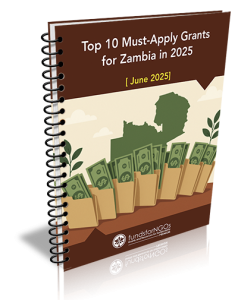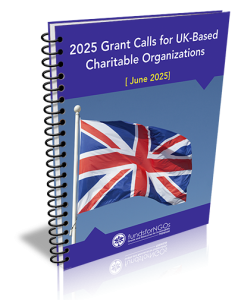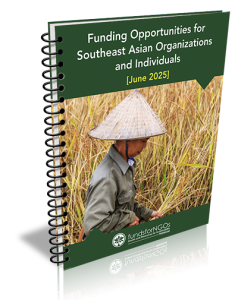Feedback is an essential component of the grant proposal process, serving as a bridge between your initial submission and the potential for future funding. Understanding the feedback you receive can be a game-changer for your organization. It is not merely a critique but rather a roadmap that highlights both strengths and weaknesses in your proposal.
When you receive feedback, it is crucial to approach it with an open mind. Instead of viewing it as a personal attack or a reflection of your organization’s worth, consider it an opportunity for growth. Take the time to dissect the comments, categorize them into themes, and identify which areas resonate most with your project goals.
Moreover, understanding feedback requires active engagement. Don’t hesitate to reach out to the reviewers for clarification on their comments. This dialogue can provide deeper insights into their perspectives and expectations.
For instance, if a reviewer mentions that your objectives are unclear, ask for specific examples of what they found ambiguous. This proactive approach not only demonstrates your commitment to improvement but also fosters relationships with funders who appreciate organizations that are willing to learn and adapt.
Identifying Areas for Improvement
Conducting a Thorough Analysis
Once you have a firm grasp on the feedback, the next step is to identify specific areas for improvement. This process involves a thorough analysis of your proposal against the feedback received. Start by creating a checklist that aligns with the key components of your proposal—objectives, methodology, budget, and sustainability.
Identifying Recurring Themes
As you review each section, note any recurring themes in the feedback. For example, if multiple reviewers pointed out that your project timeline was unrealistic, this is a clear signal that you need to reassess your planning. In addition to external feedback, consider conducting an internal review with your team.
Gathering Diverse Perspectives
Gather diverse perspectives from different departments within your organization to gain a holistic view of your proposal’s strengths and weaknesses. This collaborative effort can uncover blind spots that you may have overlooked. For instance, while one team member may excel in articulating the project’s impact, another might have insights into logistical challenges that could hinder implementation.
Creating a More Robust Proposal
By pooling your collective knowledge, you can create a more robust proposal that addresses all potential concerns.
Revising Your Grant Proposal
With a clear understanding of the areas needing improvement, it’s time to dive into revising your grant proposal. This stage is not just about making superficial changes; it requires a comprehensive overhaul where necessary. Begin by revisiting your project goals and objectives.
Ensure they are SMART—Specific, Measurable, Achievable, Relevant, and Time-bound. A well-defined objective not only clarifies your project’s purpose but also makes it easier for reviewers to understand its significance. As you revise, pay close attention to the language used throughout the proposal.
Clear and concise writing can significantly enhance readability and comprehension. Avoid jargon or overly technical terms that may alienate reviewers who are not experts in your field. Instead, aim for clarity and simplicity while still conveying the complexity of your project.
For example, instead of saying “utilizing a multi-faceted approach,” you might say “using several strategies.” This small change can make a big difference in how your proposal is perceived.
Strengthening Your Project Narrative
The project narrative is often the heart of your grant proposal; it tells the story of why your project matters and how it will make a difference. To strengthen this narrative, start by ensuring that it aligns with the funder’s priorities and mission. Research the funder’s past projects and values to tailor your narrative accordingly.
This alignment not only demonstrates that you understand the funder’s goals but also increases the likelihood of securing funding. In addition to alignment, storytelling plays a crucial role in crafting an engaging project narrative. Use real-world examples and anecdotes to illustrate the need for your project and its potential impact.
For instance, if your organization works with at-risk youth, share a compelling story about an individual whose life was transformed through your programs. This personal touch can evoke empathy and make your proposal more memorable. Remember, reviewers are often inundated with proposals; a captivating narrative can set yours apart from the rest.
Enhancing Your Budget and Financial Plan
A well-structured budget is vital for any grant proposal, as it reflects the feasibility and sustainability of your project. Begin by reviewing your existing budget in light of the feedback received. Are there areas where costs can be reduced without compromising quality?
Conversely, are there essential components that were underfunded? A detailed budget should not only outline expenses but also justify them with clear explanations. For example, if you are requesting funds for personnel costs, provide context about the roles and responsibilities of each team member involved in the project.
Additionally, consider including a financial plan that outlines how you will sustain the project beyond the grant period. Funders are increasingly interested in long-term impact and sustainability; demonstrating that you have thought through these aspects can significantly enhance your proposal’s appeal. This could involve outlining potential revenue streams or partnerships that will support ongoing efforts after initial funding has been exhausted.
Building Stronger Partnerships and Collaborations
In today’s interconnected world, building strong partnerships can greatly enhance the credibility and effectiveness of your grant proposal. Collaborations with other organizations can bring additional expertise, resources, and networks to your project. When revising your proposal, consider identifying potential partners who align with your mission and can contribute meaningfully to your project’s success.
When presenting these partnerships in your proposal, be specific about each partner’s role and contributions. Highlight any previous successful collaborations to demonstrate a track record of working effectively together. For instance, if you are partnering with a local school district to implement an educational program, detail how their involvement will enhance outreach and impact.
Funders often look favorably upon collaborative efforts as they indicate a broader community commitment to addressing the issue at hand.
Demonstrating Impact and Sustainability
Demonstrating impact is crucial for any grant proposal; funders want to know how their investment will lead to tangible results. To effectively convey this in your proposal, develop clear metrics for measuring success. These metrics should align with your project objectives and be both qualitative and quantitative in nature.
For example, if your project aims to improve literacy rates among children, consider metrics such as pre- and post-assessments or tracking attendance rates in literacy programs. In addition to measuring impact during the grant period, it is essential to articulate how you will continue to assess and report on outcomes after funding ends. This could involve establishing an evaluation framework that includes regular check-ins and assessments over time.
By demonstrating a commitment to ongoing evaluation and improvement, you reassure funders that their investment will yield lasting benefits.
Implementing a Feedback Loop for Continuous Improvement
Finally, establishing a feedback loop within your organization can foster continuous improvement in future grant proposals. After submitting a proposal—regardless of its outcome—conduct a debriefing session with your team to discuss what worked well and what could be improved for next time. Encourage open dialogue where team members feel comfortable sharing their thoughts on both the process and content of the proposal.
Additionally, consider soliciting feedback from external stakeholders or mentors who can provide an outside perspective on your proposals. This ongoing cycle of reflection and adaptation will not only enhance future submissions but also contribute to building a culture of learning within your organization. By embracing feedback as an integral part of your grant-seeking strategy, you position yourself for greater success in securing funding while continuously improving your projects’ effectiveness and impact in the community.
In conclusion, navigating the complexities of grant proposals requires diligence, adaptability, and collaboration. By understanding feedback, identifying areas for improvement, revising proposals thoughtfully, strengthening narratives, enhancing budgets, building partnerships, demonstrating impact, and implementing feedback loops, NGO professionals can significantly increase their chances of securing funding while fostering sustainable change in their communities.









































